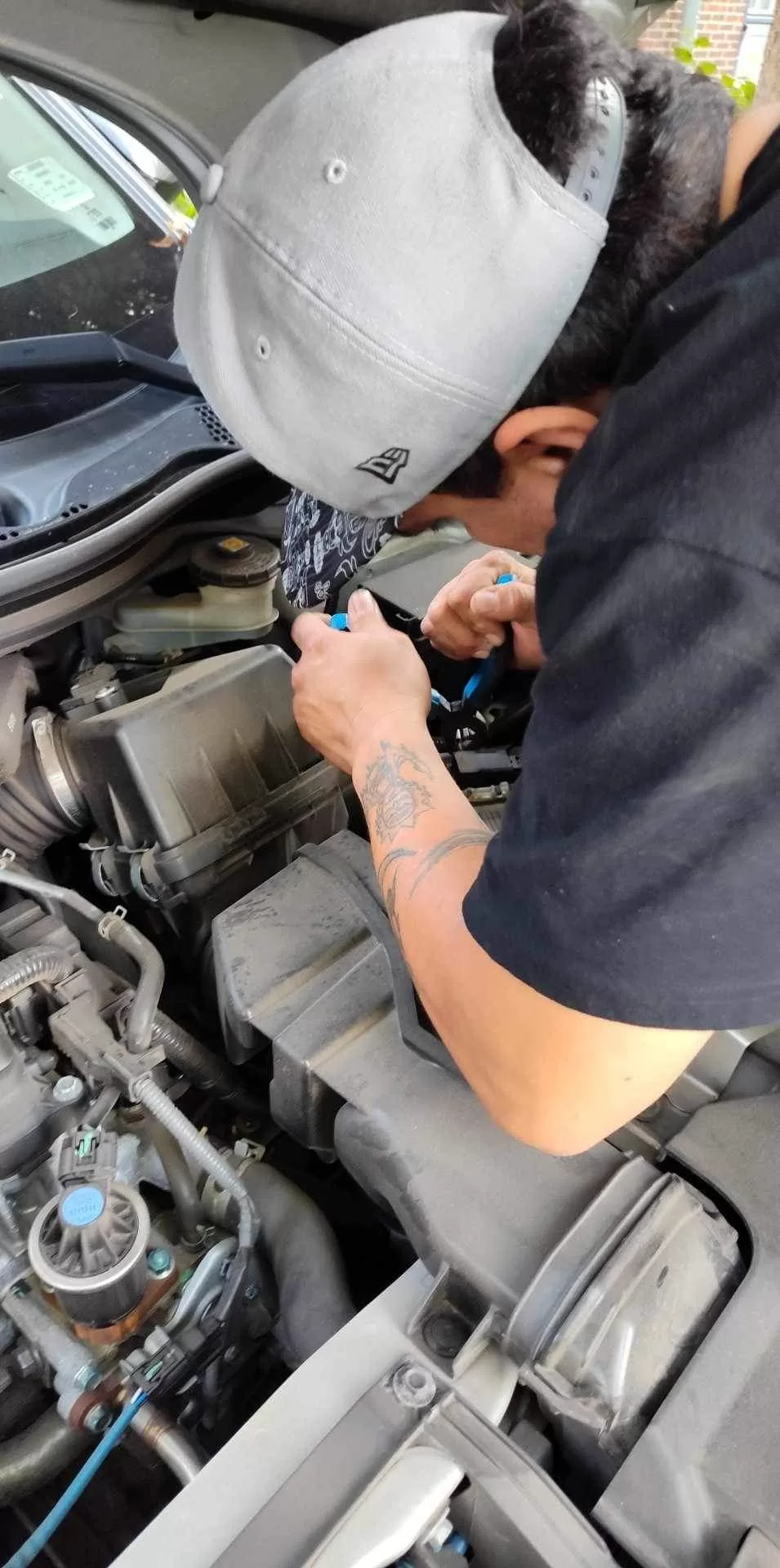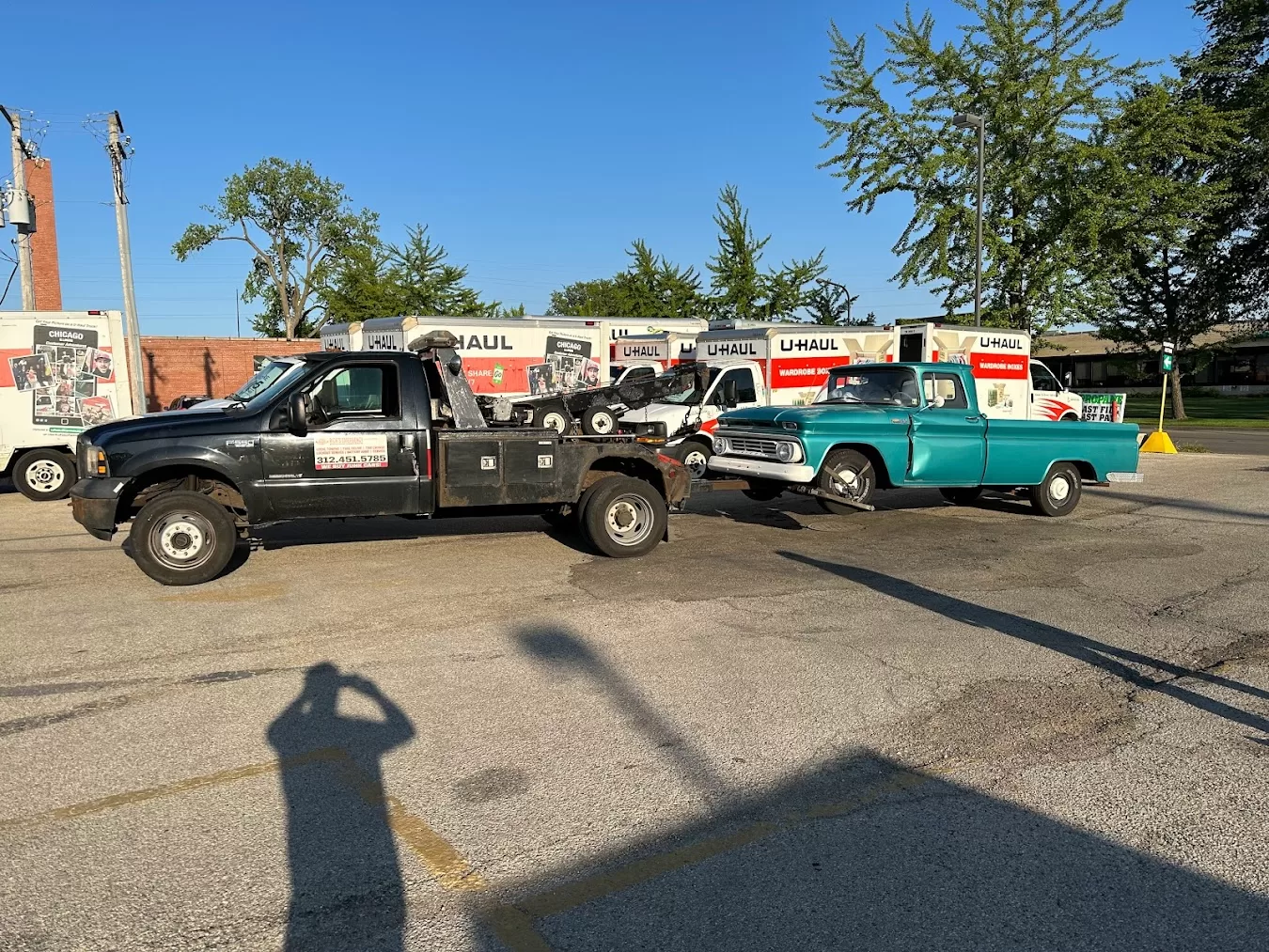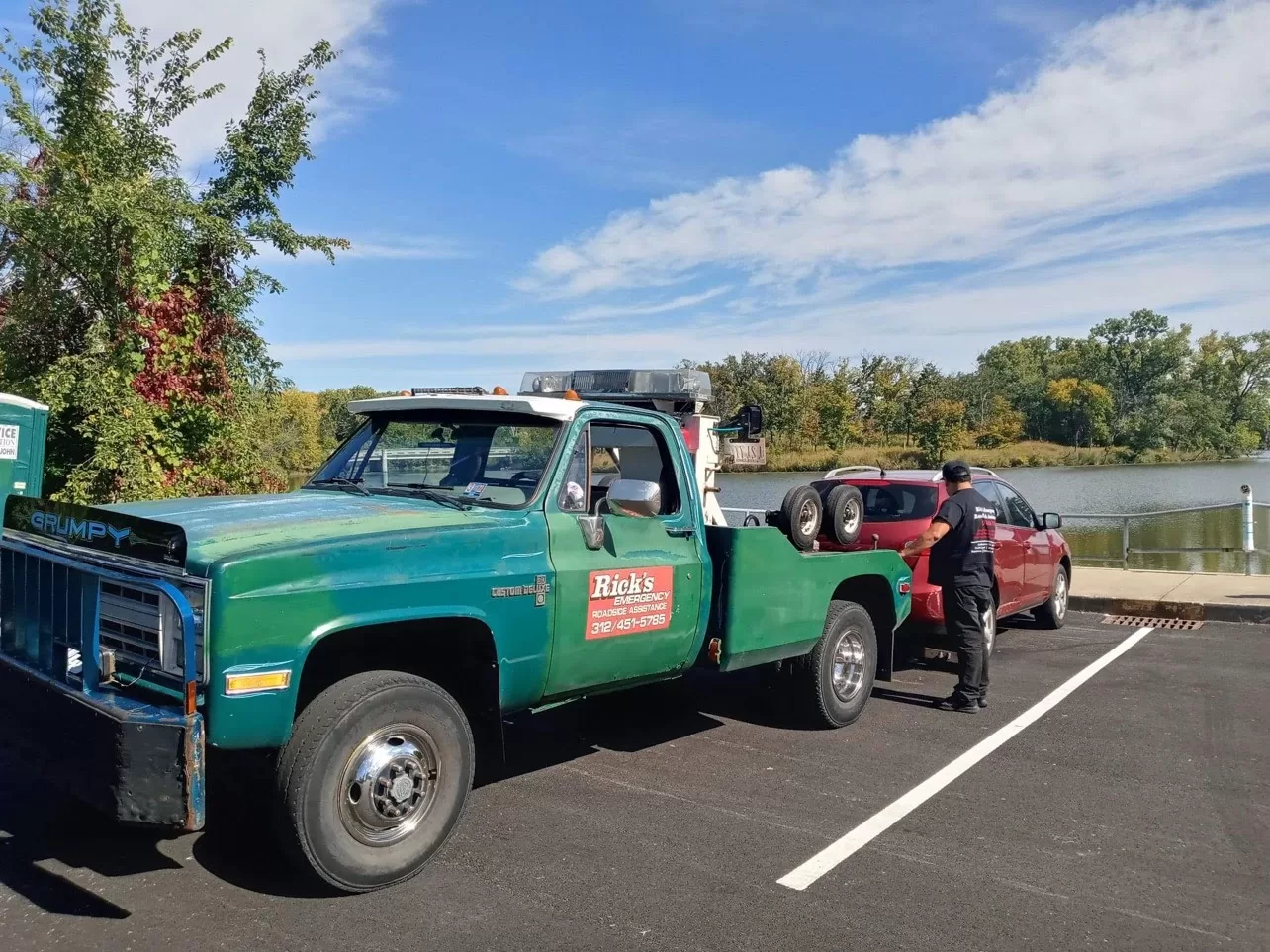If you’ve ever walked out to your car and found it completely unresponsive—whether after a cold night or a long period of inactivity—you know the panic that comes with a dead car battery. A dead battery can catch any driver off guard, but the good news is that with the right tools and knowledge, you can usually bring it back to life.
This guide will dive into the intricacies of car batteries, how to handle a dead car battery, and provide detailed steps on how to jump start a car. We’ll also cover how long a car battery typically lasts, signs that it may need replacement, and when you should consider calling professionals like Rick’s Emergency Roadside Assistance. Whether you’re facing a drained battery and need a quick jump start or want expert help diagnosing your battery issues, we’ve got you covered.
Can You Charge a Dead Car Battery?
The short answer is yes, in most cases. A dead car battery can often be revived using a jump start or a vehicle jump starter, depending on the severity of the battery’s depletion. However, the ability to recharge the battery depends on the condition and age of the battery itself.
- If the battery is simply drained (from leaving the lights on or extreme weather conditions), it can usually be brought back to life with a jump start.
- If the battery is old or damaged beyond repair, it may not hold a charge even after a jump start. Batteries typically last between 3-5 years, so if yours is nearing the end of its life, it might be time to replace it.
If you’re unsure whether your battery can be saved, call Rick’s Emergency Roadside Assistance for expert diagnostics and jump start service. Our team is trained to handle all types of battery issues and can quickly determine whether a jump start is all you need or if a replacement is necessary.
How to Jump Start a Car: A Step-by-Step Guide
If you’re dealing with a dead automotive battery, jump starting your car is one of the most common ways to get it running again. It’s a straightforward process, but if done incorrectly, it can damage your car’s electrical system. Here’s a step-by-step guide on how to properly jump start a car using jumper cables:
Step 1: Gather Your Tools
Before you begin, you’ll need:
- Jumper cables (or a vehicle jump starter if no other vehicle is available).
- A vehicle with a fully charged battery to provide the jump.
Step 2: Position the Vehicles
If you’re using another car, park both vehicles close enough so that the jumper cables can reach from one battery to the other. Ensure both cars are turned off before connecting the cables.
Step 3: Connect the Jumper Cables
- Attach one end of the red (positive) cable to the positive terminal of the dead battery.
- Attach the other end of the red cable to the positive terminal of the fully charged battery.
- Attach the black (negative) cable to the negative terminal of the working car’s battery.
- Attach the remaining black cable to an unpainted metal surface on the dead car, away from the battery. This helps prevent sparks near the battery.
Step 4: Start the Working Vehicle
Turn on the car with the charged battery and let it run for a few minutes. This gives the dead battery a chance to build up a charge.
Step 5: Start the Dead Vehicle
After allowing the working vehicle to run for a few minutes, try starting the dead car. If it doesn’t start, wait a few more minutes and try again.
Step 6: Disconnect the Jumper Cables
Once the dead car is running, carefully disconnect the jumper cables in reverse order:
- Remove the black cable from the unpainted surface of the dead vehicle.
- Remove the black cable from the negative terminal of the working battery.
- Remove the red cable from the positive terminal of the working battery.
- Remove the red cable from the positive terminal of the now-started vehicle.
Step 7: Let the Vehicle Run
Once the dead car is started, let it run for at least 20-30 minutes to ensure the alternator has enough time to recharge the battery. Consider driving around for a bit instead of just idling, as driving generates more power.
If you’re in a situation where you’re unable to jump start your car or don’t have the necessary tools, call Rick’s Emergency Roadside Assistance. We offer fast and professional jump start services throughout Chicago and can get you back on the road in no time.
What If Your Car Battery Won’t Hold a Charge?
If your battery doesn’t respond to a jump start, there may be other issues that prevent it from holding a charge. Here are some common reasons why your battery might fail to charge, even after jump-starting:
1. Old Battery
Most automotive batteries have a lifespan of 3-5 years. If your battery is beyond this range, it might not be able to hold a charge, no matter how many times you try to jump start it. In this case, a replacement is the best solution.
2. Faulty Alternator
The alternator is responsible for charging the battery while the vehicle is running. If the alternator is faulty, the battery will continue to drain, even after being jump-started. Signs of a failing alternator include dimming headlights, electrical issues, and a whining noise when the engine is running.
3. Loose or Corroded Battery Connections
Sometimes the issue isn’t with the battery itself, but with the connections. Corroded or loose battery terminals can prevent the battery from receiving a proper charge. If you notice a buildup of white or bluish powder on the terminals, clean them with a mixture of baking soda and water. Also, check that all connections are tight.
If you’re dealing with any of these issues, Rick’s Emergency Roadside Assistance can diagnose the problem and offer solutions, whether that’s a jump start, battery replacement, or towing to a repair shop.
How Long Does a Car Battery Last?
While jump starting is a quick fix for a dead battery, it’s important to understand the general lifespan of a car battery to prevent future issues. The typical automotive battery lasts anywhere from 3 to 5 years, depending on a few factors:
- Driving Habits: If you frequently take short trips, your alternator may not have enough time to fully charge the battery. Longer trips allow the alternator to work more effectively, thus extending the battery’s lifespan.
- Climate: Extreme temperatures—both hot and cold—can affect the health of your car battery. Cold weather reduces the battery’s ability to start the car, while hot weather can evaporate internal battery fluids, reducing overall performance.
- Vehicle Use: Cars that sit unused for extended periods are more likely to have dead batteries, as they aren’t being recharged regularly by the alternator.
If your battery is nearing the end of its lifespan and you’re worried about it failing unexpectedly, Rick’s Emergency Roadside Assistance is here to provide a quick battery check or replacement service.
What is a Vehicle Jump Starter?
A vehicle jump starter is a portable device that allows you to jump start your car without needing another vehicle. It’s an excellent tool to have on hand, especially if you’re frequently on the road or in situations where help might not be readily available. Unlike traditional jumper cables, a vehicle jump starter doesn’t require a second car—it provides enough charge on its own to get your vehicle started.
Here’s how to use a vehicle jump starter:
1. Charge the Jump Starter
Make sure the jump starter is fully charged before use. Most models come with charging cables that can plug into a standard wall outlet.
2. Connect to the Car Battery
Just like with jumper cables, connect the red clamp to the positive terminal and the black clamp to the negative terminal of the dead battery.
3. Turn on the Jump Starter
Once the jump starter is connected, turn it on and try starting the car. If the car starts, leave it running for several minutes to allow the alternator to recharge the battery.
4. Disconnect the Jump Starter
After the car has started, turn off the jump starter and disconnect the clamps from the battery.
If you don’t have access to a jump starter or prefer professional help, Rick’s Emergency Roadside Assistance can provide a quick jump start service near you in Chicago.
Signs Your Car Battery Needs to Be Replaced
Even with proper maintenance, all car batteries will eventually reach the end of their life. Here are some warning signs that it’s time to replace your automotive battery:
- Slow Engine Crank If your engine takes longer to start than usual, it’s often a sign that the battery is losing its charge.
- Dim Lights If your headlights or interior lights are dim, even when the engine is running, the battery may not be providing enough power to your car’s electrical system.
- Check Engine Light In some vehicles, a weak battery will trigger the check engine light. While this light could indicate several issues, it’s worth having the battery tested if you’re also experiencing electrical problems.
- Age If your battery is more than 3-5 years old, it’s likely nearing the end of its life. Proactively replacing an old battery can save you the hassle of dealing with a sudden dead battery.
If you’re noticing any of these symptoms, Rick’s Emergency Roadside Assistance can help with battery testing and replacement services.
How to Maintain Your Car Battery for Long-Term Performance
To prevent the need for frequent jump starts and extend the life of your battery, regular maintenance is essential. Here are a few tips to keep your car battery in top condition:
- Keep the Terminals Clean: Corrosion on the battery terminals can prevent the flow of electricity. Clean the terminals regularly with a mixture of baking soda and water.
- Drive Regularly: If you only take short trips, your battery doesn’t have enough time to fully recharge. Aim to drive your car for at least 20-30 minutes a few times a week to give the alternator time to charge the battery.
- Limit Accessory Use: Avoid using accessories like the radio, headlights, or chargers when the engine is off, as these can drain the battery.
- Test the Battery: Regularly test your battery to monitor its health and catch potential issues before they leave you stranded. Rick’s Emergency Roadside Assistance can perform these tests and help you stay ahead of battery issues.
Conclusion: Trust Rick’s Emergency Roadside Assistance for All Your Battery Needs
In most cases, you can revive a dead battery with a jump start or a vehicle jump starter. However, it’s important to understand that not all dead batteries are created equal. If your battery is old, damaged, or has been drained beyond recovery, a replacement may be necessary.
At Rick’s Emergency Roadside Assistance, we provide fast and reliable jump start services in Chicago. Whether your battery needs a quick jump, professional diagnostics, or replacement, we’re here to help. The next time your car won’t start, don’t hesitate to reach out to us for expert service that will get you back on the road in no time.



